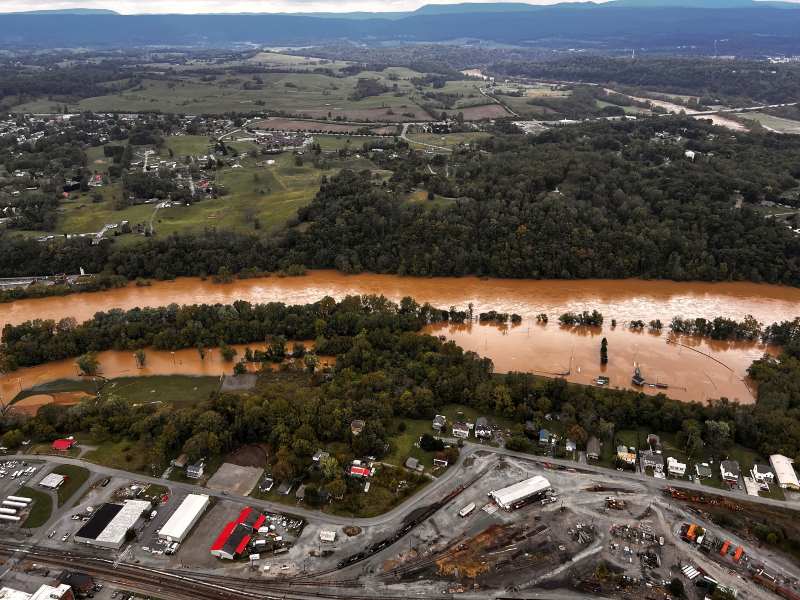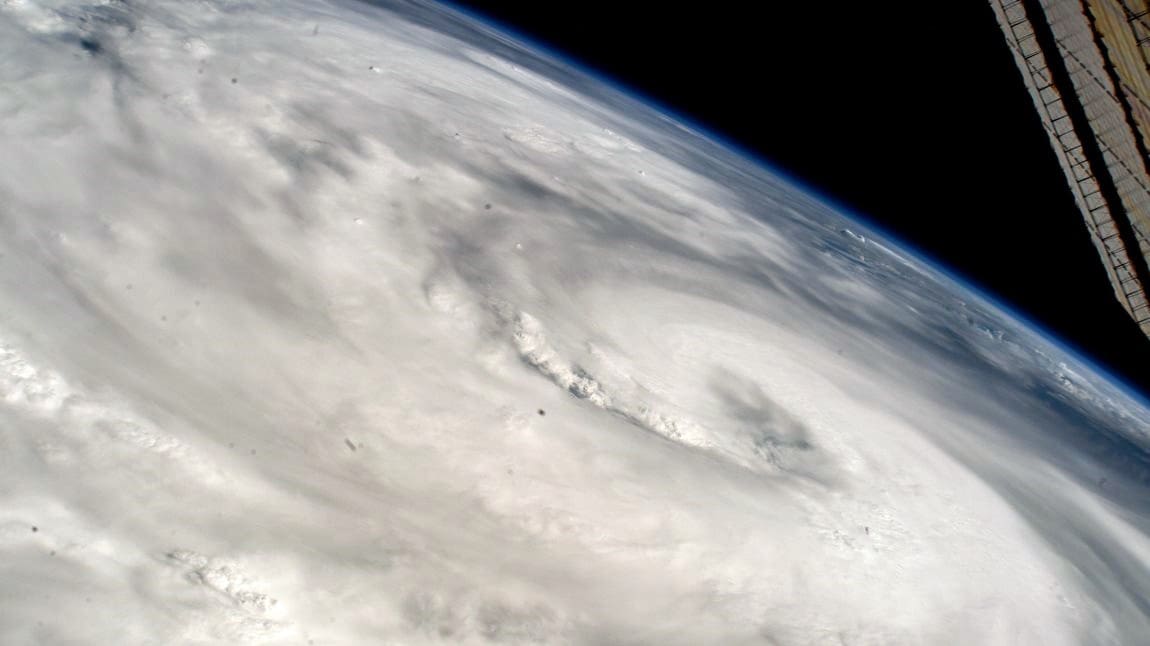Late on September 26th, Hurricane Helene made a catastrophic landfall in Florida’s panhandle as a Category 4 hurricane, unleashing a relentless barrage of high winds, torrential rainfall, and life-threatening storm surges. The storm continued its assault inland, cutting a swath of destruction across the southeastern United States, bringing unprecedented flash flooding and claiming at least 227 lives.
Scientists now attribute much of Helene’s intensified ferocity to climate change, highlighting a warming climate’s role in supercharging extreme weather events.
Hurricane Helene developed over record-high sea surface temperatures (SSTs) in the Gulf of Mexico, which supplied the storm with the energy to maintain its intensity as it approached land. In the days leading up to landfall, tropical moisture from Helene combined with a stalled cold front to produce heavy rainfall from Atlanta through the Southern Appalachians.
As a result, when Helene’s rains arrived, they fell upon already saturated ground, leading to widespread flash flooding that quickly became lethal. Rivers and streams rapidly swelled, leaving many communities vulnerable to flooding that reached rooftops, making evacuation efforts all but impossible.

The scientific community has long grappled with understanding the complex relationship between climate change and hurricanes, as these storms derive their power from multiple sources, including SSTs (sea surface temperatures) and atmospheric humidity. In the case of Helene, scientists from the United States, United Kingdom, Sweden, and the Netherlands used advanced climate modeling and observational data to analyze the hurricane’s unprecedented impacts. They divided the affected area into coastal and inland regions to assess the roles of extreme rainfall and powerful winds separately.
One of the main findings from this analysis was that rainfall intensity in the coastal regions of Florida and Georgia was about 10% higher than it would have been in a climate unaffected by human activities. Inland areas, including parts of the Southern and Central Appalachians, experienced an increase of up to 70% in rainfall likelihood due to the current 1.3°C of global warming.
Such rainfall events now occur approximately every 7 years along the coast and every 70 years inland – a stark contrast to historical patterns. Should global warming reach 2°C above pre-industrial levels, the likelihood of such rainfall events could increase by another 15-25%, underscoring the potential for even more frequent catastrophes in the future.
In addition to rainfall, the analysis also focused on wind speeds. The IRIS model – a tool for predicting hurricane intensity – was employed to simulate storms with and without the influence of climate change. This model showed that storms of Helene’s strength are now 150% more frequent and exhibit wind speeds that are approximately 11% stronger compared to a pre-industrial climate. The likelihood of SSTs favorable for such a storm has also skyrocketed, with conditions as hot as those observed during Helene now estimated to be 200 to 500 times more probable due to climate change.
The destructive potential of Helene was well-anticipated by forecasters. The National Oceanic and Atmospheric Administration (NOAA) issued warnings of “catastrophic and life-threatening” flooding and urged people to evacuate from affected coastal areas.
Yet, despite these efforts, the mountainous terrain of the inland path created unique challenges for residents. The rugged landscape funneled rainwater into narrow valleys, causing flash floods and landslides. In many cases, limited cell and internet coverage, coupled with a lack of familiarity with hurricane impacts, left communities unprepared and struggling to respond.
Moreover, outdated infrastructure exacerbated the situation. A network of aging dams, known to be vulnerable in such scenarios, narrowly avoided catastrophic failure. Evacuations were ordered downstream of several dams as water levels surged, but local flood protection systems proved inadequate against the combined forces of torrential rainfall and landslides. Homes, businesses, and entire roadways were destroyed as floodwaters overwhelmed drainage systems designed for less extreme conditions.
The findings from Helene’s analysis align with a broader body of research indicating that Atlantic hurricanes are becoming wetter and more intense under climate change. The phenomenon of rapid intensification – when a hurricane’s wind speeds increase by at least 35 mph within 24 hours – is also becoming more common as oceans warm. For coastal and inland communities alike, Helene’s impact serves as a sobering reminder that climate change is reshaping the landscape of natural disasters, rendering traditional preparedness measures increasingly inadequate.
The study provides a comprehensive look into the role of human-induced climate change in exacerbating the impacts of Hurricane Helene. It highlights the urgent need for enhanced infrastructure, updated emergency protocols, and strengthened community awareness as the frequency and intensity of extreme weather events continue to rise. With global warming showing no signs of slowing, the potential for more storms like Helene looms large, demanding action from policymakers and citizens alike to safeguard against an increasingly volatile future.
Journal Reference:
Clarke, B, Barnes, C, Sparks, N, Toumi, R, Yang, W, Giguere, J, Woods Placky, B, Gilford, D, Pershing, A, Winkley, S, Vecchi, GA, Arrighi, J, Roy, M, Poole-Selters, L, Van Sant, C, Grieco, M, Singh, R, Vahlberg, M, Kew, S, Pinto, I, Otto, F, Hess, V, Gorham, E, Rodgers, S, Philip, S, Kimutai, J, ‘Climate change key driver of catastrophic impacts of Hurricane Helene that devastated both coastal and inland communities’, Imperial College London (IMPERIAL) (2024). DOI: 10.25561/115024
Article Source:
Press Release/Material by World Weather Attribution
Featured image: Hurricane Helene is pictured (Sept. 25, 2024) from the International Space Station as it orbited 257 above the Gulf of Mexico off the coast of Mississippi. Credit: NASA Johnson | Flickr | CC BY-NC 2.0




